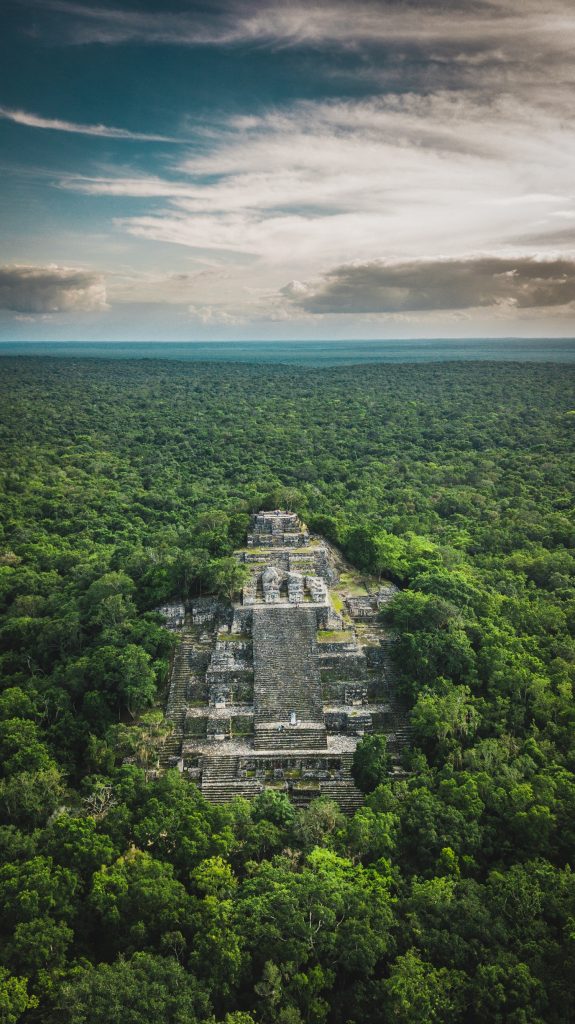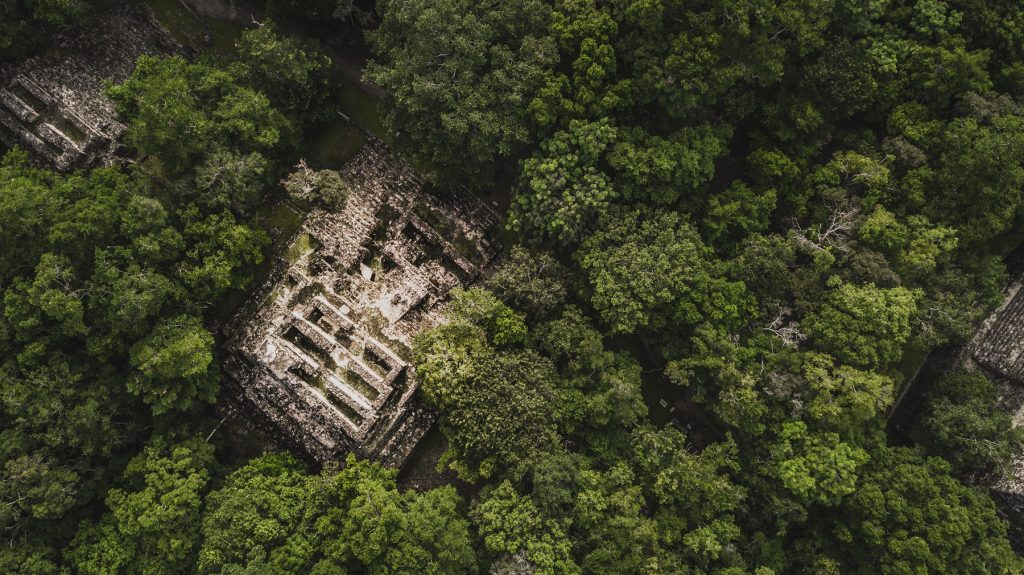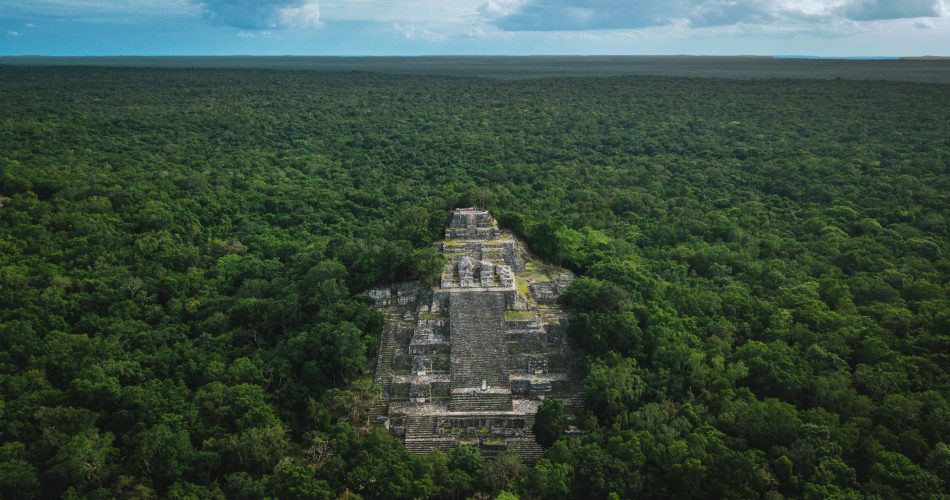The ancient Maya were great astronomers, architects but also incredible and skilled pyramid builders. Some of the most voluminous and stunning pyramids in Mesoamerica were built by the ancient Maya civilization. Their cities were well designed, and their pyramids reached immense heights. The city of Calakmul, which translates into the “City of the Two Adjacent Pyramids” is no exception.
Today, Calakmul is a Mayan archaeological site, located in the southeast of the Mexican state of Campeche, in the Petén region, in the core of the Calakmul biosphere reserve, which covers more than 700,000 ha. The site covers approximately 70 square kilometers and is home to more than 6,000 structures. In the distant past, the city became the capital of a regional state of approximately 13,000 square kilometers, having been, along with Tikal and Palenque, one of the great regional powers, during the classical period of the Mayan culture.
The Snake Kingdom

Calakmul was the seat of what historians call the Kingdom of the Snake or Snake Kingdom. This Kingdom is thought to have ruled during most of the Classic period. The ancient city of Calakmul, like many other similar Maya cities of the time, was home to a vast population. Archaeologists estimate that at its peak, the city of Calakmul had a population of 50,000 people. Its power was felt across the region and experts estimate that the city ruled over places located as far away as 150 kilometers from its center.
Archaeological surveys of the site have revealed the existence of 6,750 ancient structures identified, the largest of which is the great pyramid of the city. The core of the city covers an area estimated at around 2 square kilometers, an area of which contains over one thousand ancient structures.
120 stelae have been found at the site, making Calakmul the ancient city with the largest number of stelae in the entire Mayan area. Many correspond to very early stages around 400 BC.
The stelae of Calakmul are notable examples of Mayan art, which have yielded much information on the political and spiritual development of the city.
A city of a massive pyramid(s)
Like many other Maya cities, Chichen Itza, Tikal, etc, Calakmul too was a city that built stunning pyramids. One of the temples at the site known as structure 2 is over 45 meters (148 ft) high, which means it one of the tallest Maya pyramids ever built in history. Like many temples or pyramids within Mesoamerica, the pyramid at Calakmul is thought to have gradually increased in size throughout the history of the city, as previous buildings were used as platforms upon which generations would build much larger structures.
Therefore, we can say, that the tallest pyramid at Calakmul is the result of several superimposed structures, stacked one atop the other. The size of the central monumental architecture of the ancient city has been measured at approximately 2 square kilometers (0.77 sq mi) and the whole of the site, mostly covered with dense residential structures, is about 20 square kilometers (7.7 sq mi) in diameter, a site that proves that the city of Calakmul was a true regional power.
There are eight main structures at the site. Structure I is a 50-meters high pyramid located to the east of the city’s core. This pyramid was built upon a low hill which makes it look taller than structure 2, although this is incorrect as structure 2 is the tallest monument (pyramid) at the site, and one of the tallest in the Maya world.

Structure II is by far the most voluminous at Calakmul. This monument is a massive pyramid temple facing north, considered one of the largest in the Maya world with a base measure at 120 meters. this pyramid stands more than 45 meters high. As raveled previously, like many other pyramid temples in the Maya world (and probably Mesoamerica in general), structure two was built upon gradually throughout several generations. The pyramid’s present size was the result of building upon pre-existing temples to increase its bulk.
The core of the pyramid known as Structure II is actually a triadic pyramid, which is believed to date back to a period known as the Late Preclassic. This structure, although the oldest is still the tallest part of the pyramid. Eventually, during the Early Classic, the rulers of the city decided to further expand the pyramid. This stage saw builders add to the front of the pyramid by covering an earlier stucco-covered structure on the northern side. This extension saw the builders constitute three distinct shrines that had their own accessing stairways.
Archaeological surveys of Calakmul suggest that Structure II was built at a similar time and even similar design as the Pyramid of “El Tigre” at the ancient city of El Mirador.
Structure VII is another pyramid temple at the site. Located on the north side of the Central Plaza of Calakmul, the pyramid faces south and was built reaching a height of 24 meters (79 ft). the pyramid is thought to have undergone various construction phases. This structure was topped by a three-room temple.
There are various other, notorious structures at Calakmul. Structure III is known as the Lundell Palace and was built on the east side of the Central Plaza. This building had several rooms. Structure IV was a monument consisting of three temples and was erected on the east side of the Central Plaza. Divided in three sections, one of which was built upon a substructure that was built during the Preclassic Period. Together with Structure VI on the opposite side of the plaza, the monuments form a kind of observatory that may have helped ancient Maya astronomers determine solstices and equinoxes.
Structure V is notorious for having been surrounded by as many as 10 ancient stelae, some of which are believed to have been placed there during the 7th century AD, although many of these date back to the Preclassic Period. Structure VI located on the west side of the Central Plaza forms, together with Structure IV, an astronomical complex. This was verified by experts in 1989: researchers found that on March 21, the vernal equinox, the sun rose behind Structure 4b as seen from Structure VI.

